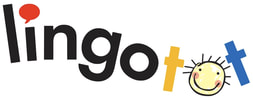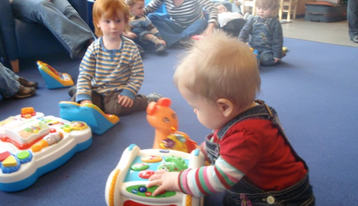| Playing with your child can be a very effective way of introducing a second language. Afterall our little ones learn an awful lot through play and in fact, this is how early years educational settings in the UK prefer to “teach” our children nowadays. You can also buy many bilingual toys for your children which claim to “teach” col- ours, numbers etc. We do love these toys at Lingotot and we make them available to youngsters in our classes, however they must be used with caution. Children simply do |
Lise Eliot is a well-known neurologist, mother and baby expert and she says, “Babies, infants and children learn best from interaction with other humans. It’s wired into us. In order to learn, children need language situations where the conversations are interactive, adaptive, and pitched at their level. If the conversations are immediately focused on what they are interested in, that can only help.” So if we play with the toys with our little ones in an interactive way, chatting as we go, then progress will happen - hurrah!
Top Tips for using language through play
- Play simple games in the foreign language such as peek-a-boo. This is so simple that anyone can learn the vocabulary to join in, yet it is fun, interactive and meaningful to real life.
- When playing hide and seek, count to 10 in your target language.
- Play with bilingual toys, but remember to play with your child and chat as you go.
- Role-play is a great way to use a foreign language. Have pretend picnics, tea parties, dress up, play shops, doctors and nurses - anything where you can use the foreign language even just a little bit.
- Building blocks are a great tool for practising colours and numbers


 RSS Feed
RSS Feed
